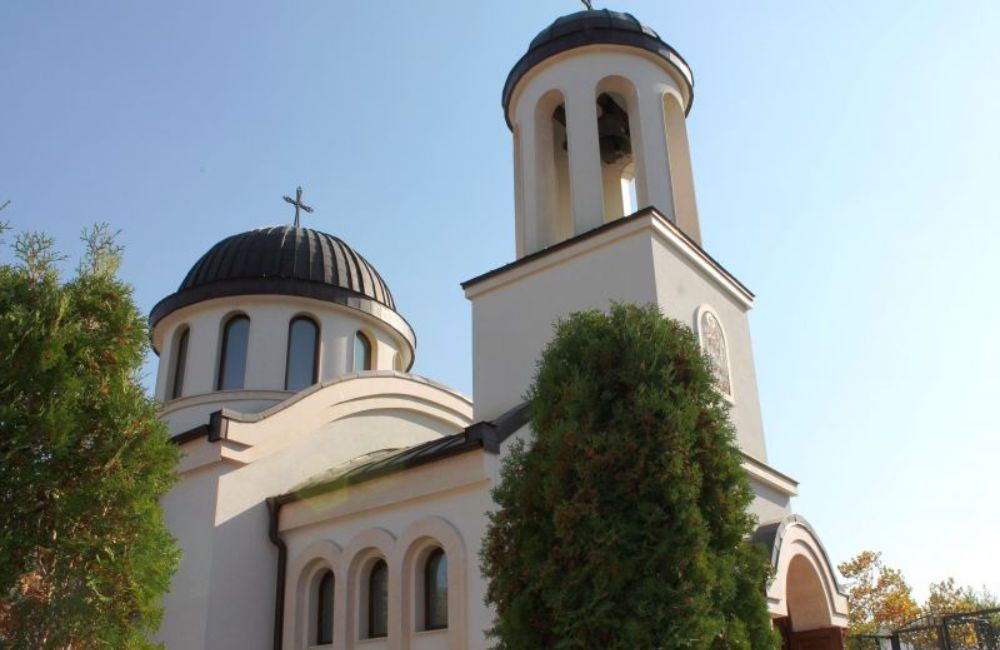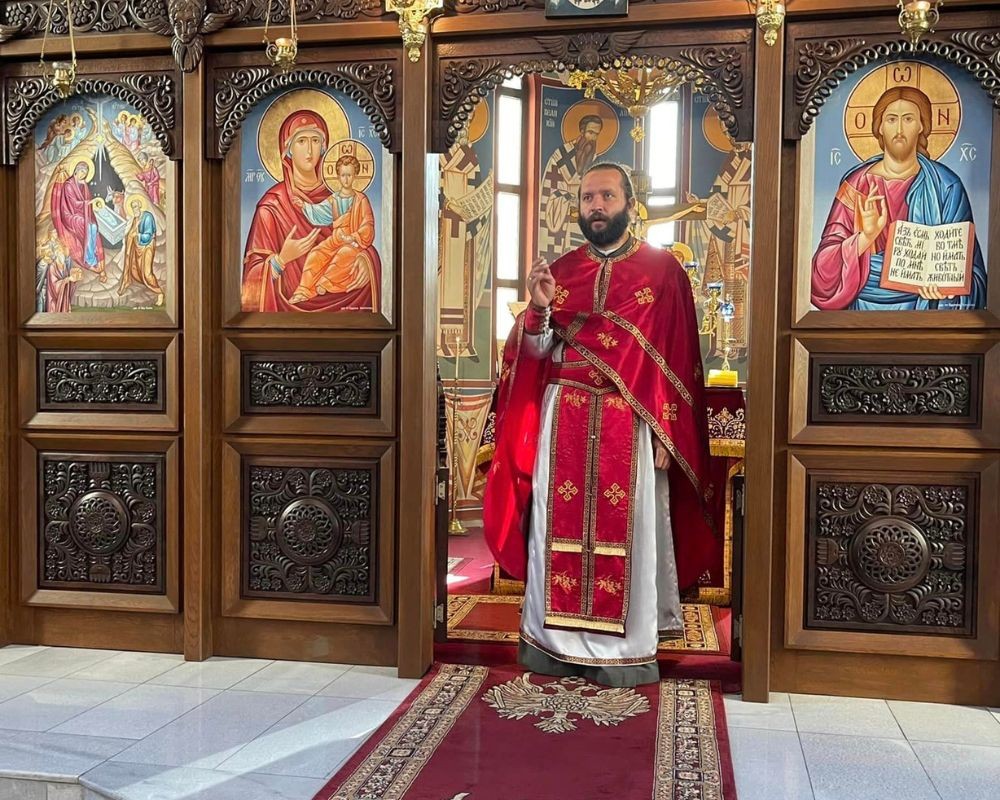St. Demetrius of Thessalonica is one of the most revered saints in Bulgaria. There are many churches in this country, built in honor of the saint who died a martyr's death in the 4th century, because of his refusal to persecute and punish the Christian believers. During the Second Bulgarian State (1185-1396), the Bulgarians perceived Saint Demetrius as the heavenly protector of the capital city of Tarnovo.
According to historical records, in 1185 an icon of St. Demetrius was miraculously received in Tarnovo. The icon was from a basilica that was looted during the Norman invasion in Thessaloniki where the relics of the saint were kept. The icon was a sign for the Bulgarian rulers that the saint will protect the recently restored Bulgarian state. In honor of the saint, a magnificent church at the foot of the Trapezitsa fortress was built. Until the third decade of the 13th century, the church remained the leading church in the state, where Archbishop Basil I became the head of the restored independent Bulgarian church (after Byzantine rule). All Bulgarian rulers in the period 1186 to 1241 received the signs of their royal dignity in the church of St. Demetrius.
The tradition of building churches in the name of St. Demetrius is preserved to this day, further strengthening the idea of the saint as a protector of Bulgaria. The beautiful white church of St. Demetrius in the Pancharevo district of Sofia also shows this. The local residents did not have their own church for many years, but even before Bulgaria became a free state, large-scale construction of a church began in the then village of Pancharevo, situated near Sofia. The construction of the church was finally completed in 1882 and on St. Demetrius Day (October 26), it was solemnly consecrated. This year marks the 140th anniversary of the church and to this day it is the only Orthodox church in the settlement in the outskirts of Sofia. The church is located in the historical center of Pancharevo and has the status of a cultural monument of local importance.

"The church was built with the efforts of the entire community of Pancharevo as a collective image of the dream of a free and united Bulgaria," Archpriest Krastin Apostolov says. In the 17th-19th centuries, at the end of the Ottoman Empire, Pancharevo was an extremely diverse place, inhabited by refugees from Macedonia and Thrace, as well as Circassians. The settlers also gave the name of the settlement, which comes from the old Bulgarian word "panitsa”, meaning a bowl and the Turkish word “çare”, meaning "resort", because of the healing mineral water springs in the area, which have been known since antiquity.
"Many of the Bulgarians who fled from Macedonia were connected to Thessaloniki as the center of the geographical region of Macedonia, so naturally the name of St. Demetrius was chosen. In a way, this church is a harbinger of a free Bulgaria and not only because of its beautiful appearance, but also because it became a gathering center for the people who would start building modern Bulgaria. It is known that one of the first hydroelectric power plants, not only in this country, but in the Balkan Peninsula as a whole, was built here. This happened a few decades after the church was built, but the people who constructed the power plant came from France and Italy and some of them settled in the small village of Pancharevo. In the beginning of the 20th century the population rapidly increased and the church became the gathering place for all new and old residents."

"Today, the situation in Pancharevo is not much different than it was 140 years ago, when the temple was built," Archpriest Krastin Apostolov adds.
"The construction of a temple happened in a multicultural environment. Therefore, I personally feel responsible to continue the work of those people who managed to build such a majestic and iconic temple before the Liberation and within the framework of the Ottoman Empire - a true symbol of a new and free Bulgaria."
English: Al. Markov
Photos: Facebook /St. Dimitar church, Nativity of Christ Church, Mladost, bg-patriarshia.bgExactly a year ago, the Bulgarian Orthodox Church established a new holiday in the church calendar - the Glorification of the holy relics of Saint Euthymius, Patriarch of T a rnovo . According to church sources, the last..
They call Nikopol “the town of ages” because its history goes back thousands of years. It was founded as a settlement in the year 169 during the reign of Roman Emperor Marcus Aurelius. In 629, theByzantine Emperor renamed the town to Nicopolis, meaning..
There are rumours and speculations that some forgeries, so good that they are not inferior to the originals, could be found among the exhibits in the museums, but at the moment a whole series of forgeries can be seen at an exhibition..
105 years ago, on November 27, 1919, a treaty was signed in the Parisian suburb of Neuilly-sur-Seine, officially ending Bulgaria's..

+359 2 9336 661
